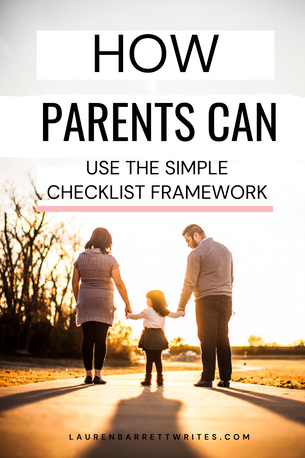|
​Imagine this….you’re walking the aisles of Target, and your daughter sees a toy she wants. She whines for it. You say, “No.†She whines louder and louder and louder. Or you just served a gourmet meal that you cooked for hours. Ten seconds into sitting down, your son proclaims that he isn’t eating it. He shoves his food away and demands for something else. He starts to cry. Whew! The screams and cries pierce your ears. You get hot. You’re very triggered. Now — go. How do you handle this? When your child is having a hard time — in public, melting down, not eating, fighting with a sibling- do you sometimes have a hard time knowing what to do? 🙋â€â™€ï¸ So you resort to 🗣ï¸yelling, âŒpunishing, 🙅â€â™€ï¸threatening ðŸ™bribing to make it stop? Even though you know those things don’t have long term results? ​ But they sometimes have immediate benefits and that’s all that matters to you right now because you feel helpless! ​When we resort to yelling, punishing, threatening, and bribing, we might temporarily stop the problem, which, to be honest, is quite a relief when we have a child melting down or causing a scene. It takes us out of the situation. But here’s the problem, those solutions are only temporary and don’t ever actually teach your child a skill to replace the unwanted behavior. So because your children haven’t learned ways on how to handle frustration, rejection, and disappointment, they’ll turn to what works — yelling, whining, screaming for long periods of time until you give in. The cycle repeats itself. Okay, but I’ve been learning positive strategies that have long term benefits, but they are so hard to remember to do in the actual moment! If this is you, I get it. There are tons of strategies out there on Instagram, TikTok, blogs, and parenting groups. But if you were like me, all of these strategies can be quite overwhelming and hard to know when I was actually supposed to use them. Let alone when a child was screaming in my face. So I created the CHECKLIST FRAMEWORK. I gathered inspiration from high pressure jobs like airline pilots. Pilots follow a series of routine checklists in order to ensure the maximum safety of their passengers. I’ve rarely seen a pilot who isn’t calm and confident even when they are faced with some difficulties. Why? Because everything is right there written down for them outlining what they need to do, and they have practiced it many times. Let’s step back and imagine if, when faced with a challenge, your pilot started to freak out when you started to freak out, and instead of coming over the loudspeaker to ensure everyone that everything was going to be OK, they started yelling at you to be quiet and threatening you if you didn’t. Chaos would ensue, and I guarantee things wouldn’t get better. ​ The same is true with our kids. They need calm, confident leaders who have control over the hard situations they throw at us. That’s how the Checklist Framework comes into play.
Here’s how it works?
1ï¸âƒ£ Choose from a list of strategies that work for you and your family. 2ï¸âƒ£ Write them down on your checklist. 3ï¸âƒ£ The next time you’re having a hard parenting moment, refer to your checklists that you have stored around your house or in your diaper bag and car. 4ï¸âƒ£ Be the calm and confident leader that your child is more likely to respond to. Just like how you feel calmer when your pilot or doctor knows what they’re doing, the same is true for your kids. I even created a parenting guide, Now What?, to help you get started on your Checklist Framework. Choose from 70+ strategies that are all in one place to add to your checklists. ​ When life gives you a hard moment, simply run down your checklist until something works for either a.) You to feel calmer and less triggered or b.) Your child to feel calmer and less triggered. ​You are ready to have strategies in your toolkit that you can access anytime when you are struggling to think of what to do next when you have a hard parenting moment: *Module 1: My Child Won’t Listen (Greenlight Behavior). Now What? *Module 2: My Child Is Whining (Yellow Light Behavior). Now What? *Module 3: My Child is Hitting, Kicking, Biting, Throwing (Redlight Behavior). Now What? *Module 4: My Child Won’t Go to Bed. Now What? *Module 5: My Child is in the Middle of a Tantrum. Now What? *Module 6: My Child Won’t Eat. Now What? *Module 7: My Child is Scared/Anxious. Now What? *Module 8: My Child Prefers One Parent. Now What? *Module 9: My Child Gives Up Easily. Now What? *Module 10: My Child Won’t Play Independently. Now What? *Bonus Module: Some Thoughts on Screen Time ​ Click here to learn more. ​
0 Comments
Leave a Reply. |
Categories
All
|
Proudly powered by Weebly




 RSS Feed
RSS Feed